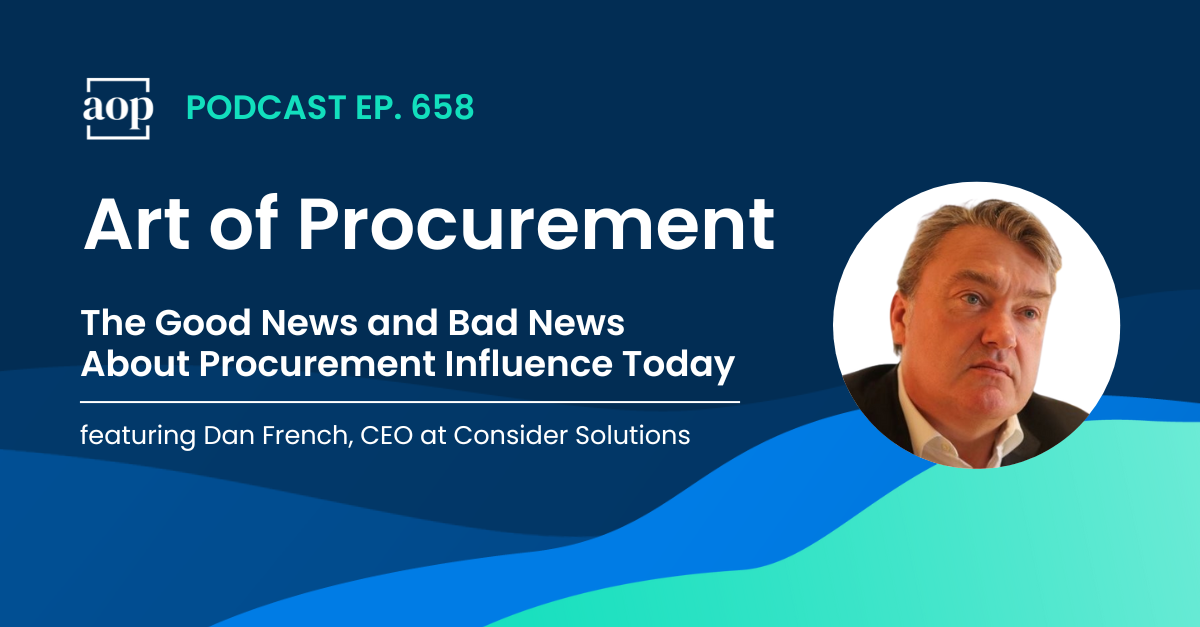
“I think it is really important not to assume that just trying to tie everything to revenue is the right answer … I think we should tie everything to the value and the outcomes perceived by our stakeholders.” – Dan French, CEO at Consider Solutions
Procurement has long felt underappreciated and undervalued. Their hope has been that by proving their worth as a revenue driver for the business (through whatever mathematical gymnastics is necessary), they can win the fight for relevance, support, and resources and secure that much-coveted ‘seat at the table.’
While the struggle for recognition is valid and revenue is certainly one (of many) key value point, procurement’s need to prove themselves to the business can sometimes lead them down the wrong path.
Procurement must stop asking for approval and influence – and using one cost savings metric to justify it – and focus instead on proactively creating the desired approval and influence by aligning with what matters most to the business.
Philip Ideson interviewed Dan French, CEO at Consider Solutions, in the opening session of Mastermind LIVE 2023 about how procurement can get out of reactive mode and turn their hand-wringing over a perceived lack of appreciation into real influence and undeniable value creation that no executive team or other area of the business will be able to discount.
Listen to the Conversation
Don’t take it personally
It’s a familiar lament for procurement – the feeling of frustration that nobody quite understands the value you are delivering, the complexity of the role, or how much has to go into getting it right. While this frustration is not unfounded, procurement sometimes doesn’t realize that they’re not in it alone.
“You can end up with this sense that nobody really appreciates what we do,” said Dan. “But this is not unique to procurement. Finance leaders feel the same way. Heads of IT, manufacturing, data, technology – they all have the same problem.”
For procurement, he says, realizing that this lack of appreciation isn’t especially unique should be a boost, and possibly even liberating or empowering.
“When you realize that, it does give you a slightly different perspective because then you realize these people you talk to, these stakeholders that are frustrating you with their lack of appreciation, have got exactly the same existential woes that we have,” he said. “But I think we can use this as a superpower. We can turn that into a strength.”
Measure beyond cost savings
In their pursuit of influence and a reputation as a key strategic partner in the business, procurement often over-emphasizes cost savings as their main point of value creation and, in the process, sometimes overextends themselves in connecting this with revenue.
Clearly, revenue – and procurement’s role in creating it – matters, but, Dan says, it would be to their own detriment to stake procurement’s entire value proposition on revenue through cost savings.
“I think it is really important not to assume that just trying to tie everything to revenue is the right answer,” said Dan. “A cost saving isn’t the same as revenue. You can’t perpetually reduce costs. But theoretically, you can perpetually increase revenue, so as a business, you can’t cost-save your way to success.”
Align with the business
For procurement to demonstrate the full scope of their value and influence, he said, they have to truly align with what matters most to the business.
Instead of tying everything to revenue, Dan said, “I think we should tie everything to the value and the outcomes perceived by our stakeholders.”
Procurement can fight and struggle to prove their value, but if they’re not pointing their lens to what the business thinks is important or what defines success for the entire company, then it will continue to be a battle.
“Procurement can do their best to influence, but at the end of the day, the business as a whole decides what the priorities are,” he said. And it’s up to procurement, as with any other critical business unit, to fall in lock-step with those priorities. Without that alignment, the “value” that procurement creates, or believes they create, may not be that valuable after all.
For example, he said, “procurement might be doing a great job in sourcing and doing wonderful contract negotiations, but if they are the wrong contract negotiations, or if the business is not able to take advantage of them, we all fail.”
Have a balanced scorecard
The key to unlocking procurement’s influence and changing hearts and minds at the leadership level doesn’t rest on one single metric, says Dan. It’s about creating a “balanced scorecard” that takes into account the most important performance metrics that will demonstrably help to move the business forward toward the goals and priorities it has set.
First, procurement needs to collaborate and communicate across the business to get a full-scope understanding of those priorities before aligning their own functional scorecard with the overall vision of what success looks like.
This requires procurement to rethink how they define value. “I think it’s a mindset about focusing on value you can deliver or that your organization can deliver – but value in other people’s eyes, not in your eyes,” he said. “You have to ask ‘what is value to them?’”
Since the pandemic, for example, security of supply – availability and timeliness of supply – have been a high priority, even higher in many cases than cost savings.
As with most areas of the business, there is not just one performance indicator but, Dan says, usually four or five that surface as the most important, and this can change over time as the needs of the business or external pressures change.
The most important common denominator is that they are all contributing to the shared goals of the business, and that the value stems from procurement’s work.
Subscribe to Art of Procurement
Apple | Stitcher | iHeart Radio | Email
Links & Resources




